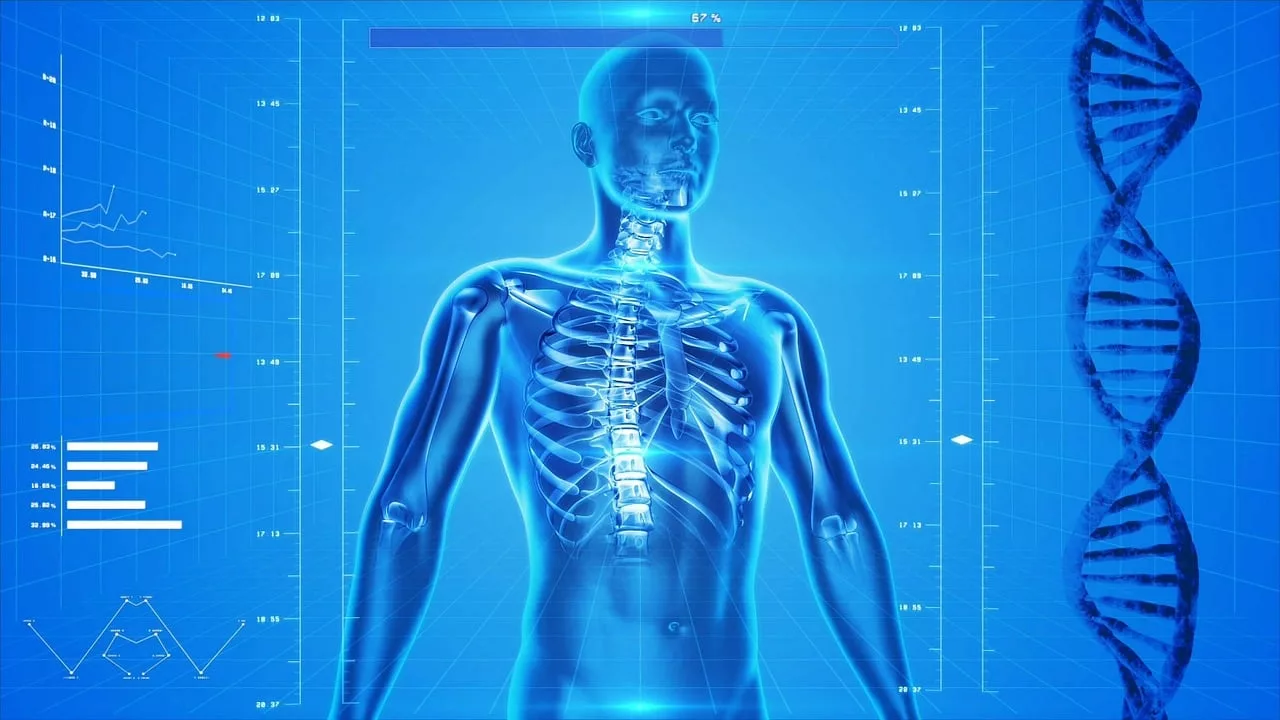The human body is a complex and dynamic system composed of trillions of cells. However, scientific discoveries have revealed that we are not just made up of our own cells but also host a vast community of microorganisms, including bacteria, viruses, fungi, and other microbes. This intricate relationship between the host and its microbial inhabitants has led to the development of the hologenome theory, which suggests that we are, in essence, a walking ecosystem of microbes. The hologenome theory posits that the collective genomes of these microorganisms, along with our own, form a hologenome that influences our health, development, and evolution. This article explores the intricacies of the hologenome theory, its key concepts, implications, and how it reshapes our understanding of health and disease.
What is the Hologenome Theory?
The hologenome theory proposes that the host organism and its associated microbial communities function as a single, integrated unit called the holobiont. The term “hologenome” refers to the combined genetic material of both the host and its microbiota. This theory emphasizes the symbiotic relationships between the host and its microorganisms, highlighting the importance of these interactions in the host’s fitness, adaptation, and evolution.
Key Concepts of the Hologenome Theory
- Holobiont and Hologenome: The holobiont is the host organism along with its associated microbial communities. The hologenome encompasses the genetic material of both the host and its microbiota. This concept suggests that the host and its microbiome work together as a single entity, influencing each other’s functions and overall health.
- Symbiotic Relationships: All animals and plants establish symbiotic relationships with microorganisms. These relationships can be mutualistic, where both parties benefit, or parasitic, where one benefits at the expense of the other. The hologenome theory highlights the significance of these interactions in the host’s fitness and evolution.
- Genetic Variation and Adaptation: The hologenome can vary due to changes in the host genome or the microbiome. This variation can be crucial for adaptation and survival, especially under environmental stress. Microbial communities can rapidly change in response to environmental factors, aiding the host in adapting to new conditions.
- Transmission Across Generations: Some symbiotic microorganisms are transmitted from one generation to the next, maintaining a core microbiome that can influence the host’s traits and health over time. This vertical transmission ensures the continuity of beneficial microbial relationships.
The Microbiome: Our Invisible Partners
To understand the hologenome theory, it’s essential to grasp the concept of the microbiome—the collection of all microorganisms living in and on our bodies. The human microbiome is a diverse and dynamic ecosystem that plays a crucial role in various physiological processes, including digestion, immunity, and metabolism.
Composition of the Human Microbiome
The human microbiome is composed of a vast array of microorganisms, including:
- Bacteria: The most abundant and diverse group within the microbiome. They are found in various body sites, including the gut, skin, mouth, and respiratory tract.
- Viruses: Including bacteriophages, which infect bacteria and play a role in regulating bacterial populations.
- Fungi: Such as yeasts, which are part of the normal flora of the skin and mucous membranes.
- Archaea: Less common but present in the gut and other body sites.
Functions of the Microbiome
The microbiome performs several essential functions, including:
- Digestion and Metabolism: Gut bacteria help break down complex carbohydrates, produce vitamins, and aid in nutrient absorption.
- Immune System Modulation: Microbes interact with the immune system, promoting immune tolerance and defending against pathogens.
- Protection Against Pathogens: Beneficial microbes outcompete harmful pathogens for resources and space, providing a protective barrier.
- Development and Homeostasis: The microbiome influences the development of various organs and systems, maintaining physiological balance.
Implications of the Hologenome Theory
The hologenome theory has significant implications for our understanding of health, disease, and evolution. It shifts the focus from viewing the host as an isolated entity to considering the host and its microbiome as an interconnected system.
Health and Disease
The hologenome theory emphasizes the importance of maintaining a healthy microbiome for overall well-being. Disruptions to the microbial balance, known as dysbiosis, can lead to various health issues, including inflammatory bowel disease, obesity, diabetes, and mental health disorders. Factors such as diet, antibiotics, hygiene, and lifestyle can influence the composition of the microbiome, affecting the host’s health.
Evolution and Adaptation
The hologenome theory provides insights into the role of microorganisms in the host’s evolution and adaptation. Microbial communities can rapidly respond to environmental changes, aiding the host in adapting to new conditions. This dynamic interplay between the host and its microbiome allows for greater genetic diversity and flexibility, enhancing the host’s chances of survival.
Personalized Medicine
The hologenome theory paves the way for personalized medicine approaches that consider the individual’s unique microbiome. Treatments and interventions can be tailored to restore or enhance the microbiome, improving health outcomes. For example, fecal microbiota transplantation (FMT) has shown promise in treating recurrent Clostridium difficile infections by restoring a healthy gut microbiome.
Research and Discoveries in the Hologenome Theory
Recent research has provided valuable insights into the hologenome theory, revealing the intricate relationships between hosts and their microbiomes. Studies have explored the impact of the microbiome on various aspects of health and disease, highlighting the potential for innovative therapies and interventions.
Gut-Brain Axis
The gut-brain axis is a bidirectional communication pathway between the gut microbiome and the central nervous system. Research has shown that gut bacteria can influence brain function and behavior through the production of neurotransmitters, metabolites, and immune signaling molecules. Dysbiosis in the gut microbiome has been linked to mental health disorders such as depression, anxiety, and autism spectrum disorders.
Microbiome and Immunity
The microbiome plays a crucial role in modulating the immune system. Beneficial microbes help train the immune system to distinguish between harmful pathogens and harmless antigens, promoting immune tolerance. Dysbiosis can lead to immune dysregulation and contribute to autoimmune diseases, allergies, and chronic inflammation.
Microbiome and Metabolism
The gut microbiome is involved in regulating metabolism and energy balance. Microbes help break down complex carbohydrates, produce short-chain fatty acids, and influence fat storage and insulin sensitivity. Dysbiosis has been associated with metabolic disorders such as obesity, type 2 diabetes, and metabolic syndrome.
Microbiome and Skin Health
The skin microbiome acts as a protective barrier against pathogens and environmental stressors. It plays a role in maintaining skin health and preventing conditions such as acne, eczema, and psoriasis. Dysbiosis in the skin microbiome can disrupt this balance and contribute to various skin disorders.
The Future of the Hologenome Theory
As research on the hologenome theory continues to evolve, it holds great promise for advancing our understanding of health and disease. Future studies will likely explore the following areas:
Microbiome-Based Therapies
The development of microbiome-based therapies, such as probiotics, prebiotics, and synbiotics, aims to restore or enhance the microbiome to improve health outcomes. Personalized treatments that consider an individual’s unique microbiome composition may offer more effective and targeted interventions.
Microbiome and Aging
Understanding how the microbiome changes with age and its impact on the aging process can provide insights into promoting healthy aging. Research may focus on interventions to maintain a balanced microbiome and prevent age-related diseases.
Microbiome and Environment
Investigating the influence of environmental factors, such as diet, pollution, and lifestyle, on the microbiome can help identify strategies to support a healthy microbiome. Public health initiatives and policies may be developed to promote behaviors that positively impact the microbiome.
Microbiome and Mental Health
Further research on the gut-brain axis and the role of the microbiome in mental health disorders may lead to innovative treatments for conditions such as depression, anxiety, and neurodevelopmental disorders. Understanding the mechanisms of microbiome-brain communication can pave the way for new therapeutic approaches.
Final Words
The hologenome theory offers a paradigm shift in our understanding of what it means to be human. It emphasizes the interconnectedness of our bodies with the microbial world, highlighting the importance of the microbiome in health, disease, and evolution. As we continue to unravel the complexities of the hologenome, we gain valuable insights into the intricate relationships that shape our biology. Embracing this holistic perspective can lead to innovative approaches in medicine, personalized treatments, and a deeper appreciation for the microbial communities that are an integral part of our existence.
The hologenome theory challenges the traditional notion of the individual as a single entity and presents us as complex ecosystems in our own right. By recognizing the significance of our microbial partners, we can foster a greater understanding of health and wellness, ultimately improving our quality of life. As research progresses, the potential for microbiome-based therapies and personalized medicine continues to grow, offering new avenues for enhancing human health and well-being.




